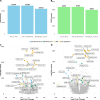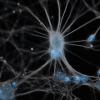Long-read RNA-sequencing reveals transcript-specific regulation in human-derived cortical neurons
- PMID: 40735840
- PMCID: PMC12308531
- DOI: 10.1098/rsob.250200
Long-read RNA-sequencing reveals transcript-specific regulation in human-derived cortical neurons
Abstract
Long-read RNA sequencing has transformed transcriptome analysis by enabling comprehensive mapping of full-length transcripts, providing an unprecedented resolution of transcript diversity, alternative splicing and transcript-specific regulation. In this study, we employed nanopore long-read RNA sequencing to profile the transcriptomes of three cell types commonly used to model brain disorders, human fibroblasts, induced pluripotent stem cells and stem cell-derived cortical neurons, identifying extensive transcript diversity with 15 072 transcripts in stem cell-derived cortical neurons, 13 048 in fibroblasts and 12 759 in induced pluripotent stem cells. Our analyses uncovered 35 519 differential transcript expression events and 5135 differential transcript usage events, underscoring the complexity of transcriptomic regulation across these cell types. Importantly, by integrating differential transcript expression and usage analyses, we gained deeper insights into transcript dynamics that are not captured by gene-level expression analysis alone. Differential transcript usage analysis highlighted transcript-specific changes in disease-relevant genes such as APP, KIF2A and BSCL2, associated with Alzheimer's disease, neuronal migration disorders and degenerative axonopathies, respectively. This added resolution emphasizes the significance of transcript-level variations that often remain hidden in traditional differential gene expression analyses. Overall, our work provides a framework for understanding transcript diversity in both pluripotent and specialized cell types, which can be used to investigate transcriptomic changes in disease states in future work. Additionally, this study underscores the utility of differential transcript usage analysis in advancing our understanding of neurodevelopmental and neurodegenerative diseases, paving the way for identifying transcript-specific therapeutic targets.
Keywords: alternative splicing; human-derived cortical neurons; induced pluripotent stem cells; long-read RNA-sequencing; transcript usage; transcriptomics.
Conflict of interest statement
We declare we have no competing interests.
Figures







Similar articles
-
SQANTI: extensive characterization of long-read transcript sequences for quality control in full-length transcriptome identification and quantification.Genome Res. 2018 Mar 1;28(3):396-411. doi: 10.1101/gr.222976.117. Genome Res. 2018. PMID: 29440222 Free PMC article.
-
Short-Term Memory Impairment.2024 Jun 8. In: StatPearls [Internet]. Treasure Island (FL): StatPearls Publishing; 2025 Jan–. 2024 Jun 8. In: StatPearls [Internet]. Treasure Island (FL): StatPearls Publishing; 2025 Jan–. PMID: 31424720 Free Books & Documents.
-
Integrating short-read and long-read single-cell RNA sequencing for comprehensive transcriptome profiling in mouse retina.Genome Res. 2025 Apr 14;35(4):740-754. doi: 10.1101/gr.279167.124. Genome Res. 2025. PMID: 40050124
-
Systemic treatments for metastatic cutaneous melanoma.Cochrane Database Syst Rev. 2018 Feb 6;2(2):CD011123. doi: 10.1002/14651858.CD011123.pub2. Cochrane Database Syst Rev. 2018. PMID: 29405038 Free PMC article.
-
The Lived Experience of Autistic Adults in Employment: A Systematic Search and Synthesis.Autism Adulthood. 2024 Dec 2;6(4):495-509. doi: 10.1089/aut.2022.0114. eCollection 2024 Dec. Autism Adulthood. 2024. PMID: 40018061 Review.
References
MeSH terms
Grants and funding
LinkOut - more resources
Full Text Sources

